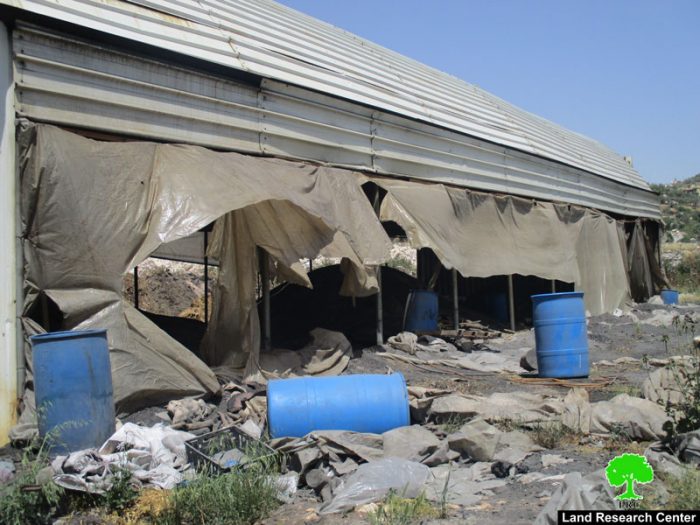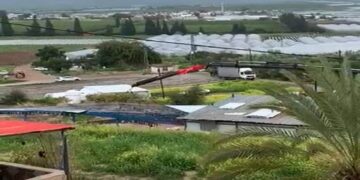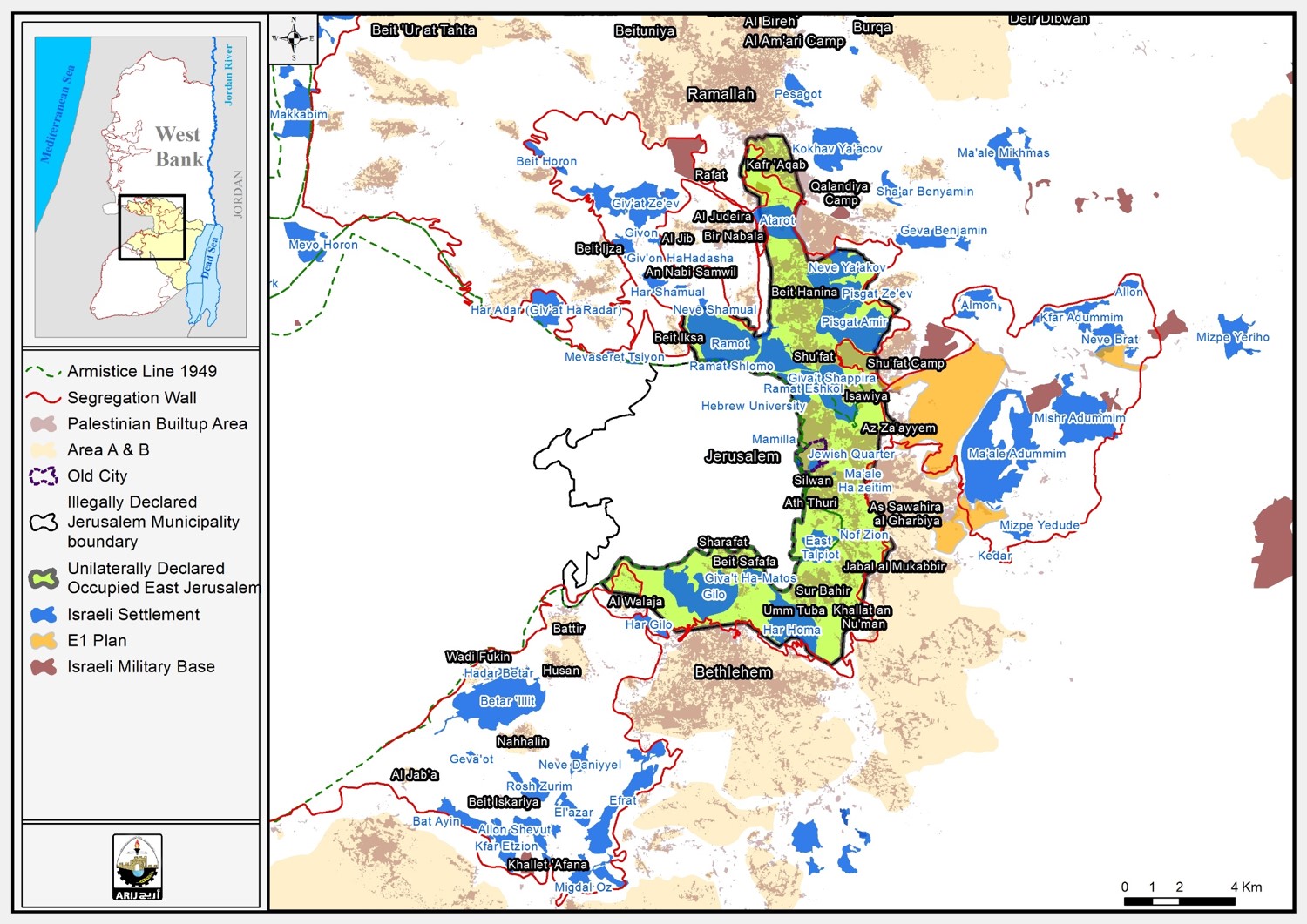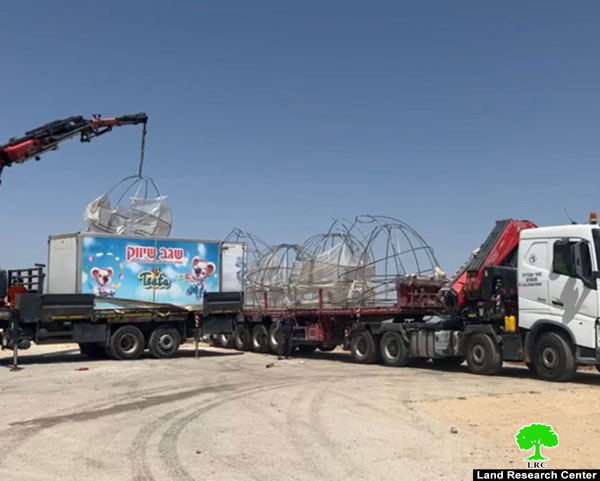- Violation: confiscating coal and demolishing a workshop
- Location: Ya'bad town- Jenin city
- Date: April 23, 2017
- Perpetrators: Israeli Occupation Forces
- Victims: citizens Faed Abu Bakr and Mahmoud Jaber
Details:
Ya'bad town is well known for the craft of coal production. This handcraft is considered a source of income for tens of Palestinian families in the area, the neighboring villages and rural areas in addition to it being an economic revenue for the town.
It should be marked that the occupation has been trying over the past five years to halt and hinder this craft. To do so, Israeli Occupation Forces served many stop-work orders on coal production workshops, confiscated tons of it and banned the importing of coal from the areas behind the armistice line of 1949. Such Israeli measures caused tens of families to lose their source of income.
Today, the so-called Israel Civil Administration accompanied by two military dozers raided Ya'bad town, confiscated around 60 tons of coals and demolished parts of the workshops in which the coal was produced. Noteworthy, the workshops belong to citizens Faed Abu Bakr and Mahmoud Jaber


Photos 1-2 :the coal workshop of Mahmoud Jaber
Photos 3-4: the coal workshop of Faed Abu Bakr
It is reported that since November 2016, the occupation threatened 13 coal workshops of demolition in case they kept on producing coals. This step was carried out on the claim that coal affects nature and causes bad odors for the neighboring colonies.
About the implications of the incident, the representative of coal workshops in Ya'bad, Kayed Abu Bakr, told Land Research Center the following:
" Before 2008, the town accommodated many coal workshops that provided source of income for around 500 families. In 2013, the occupation put restrictions on the owners of workshops, demolished a big number of their workshops and confiscated massive amounts of coal and other equipments. This pushed the business owners to leave the area. Now, only 25 coal workshop remained functional in the area.
According to Abu Bakr, the aim behind such Israeli targeting is to destroy Ya'bad's economy and please the colonists of Homesh and Mevodotan that are founded in the nearby.
Despite the fact that the business owners submitted many complaints to Israel Supreme Court in regard to targeting their workshops, the court stalled and never issued any decision in favor of Palestinians.
The following table shows information about the coal business owners that are targeted by the occupation in Ya'bad:
|
Owner |
Production: ton\year |
Benefited families |
|
Mustafa Ali Naser |
1500 |
24 |
|
Khaled Abu Bakr |
1500 |
11 |
|
Mahmoud Ahmad Jaber |
3000 |
7 |
|
Subhi Hasan Zayed |
4000 |
22 |
|
Jaser Abu Bakr |
1000 |
10 |
|
Mansour Tawfeeq |
600 |
5 |
|
Kayed Tawfeeq |
600 |
6 |
|
Rasem Khataib |
1200 |
12 |
|
Mansour Abu Bakr |
3000 |
5 |
|
Mohammad Abu Bakr |
3000 |
4 |
|
Nasr Abu Bakr |
4000 |
7 |
|
Mufeed Abu Bakr |
600 |
6 |
|
Ahmad Khatib |
1500 |
6 |
|
Mohammad Hussein Rafiq |
1200 |
8 |
|
Bilal Ahmad Abadi |
1000 |
4 |
|
Majdi Amarneh |
1500 |
6 |
|
Mohammad Atatrah |
400 |
4 |
|
Total |
29600 |
147 |
About Ya’bad village:
The village is located 18 km to the west of Jenin governorate. It is edged by the villages of Al-Khiljan, Al-Tarm, Al-Araqa, Imraiha and Khirbet Mas’oud, Zabda from the north, Qaffin village from the west, Al-Qaffriat village from the east and Arraba, Al-Nazla Al-Sharqiya and Baqa Al-Sharqiya from the south. With a total land area of 29572 dunums, of which 1814 dunums are the built-up area, Ya’bad is inhabited by 13640 people (2007). The occupation confiscated 1840 dunums from Ya’bad; the confiscation is clarified as follows:
- Israeli colonies confiscated 483 dunums as follows:
|
|
Year of establishment |
Confiscated area\dunum |
No. of colonists |
|
Mevo Dotan |
|
|
|
|
Jarmish |
|
|
|
|
|
|
|
|
- Bypass roads number (569 & 585) confiscated 1357 dunums.
The lands of Ya’bad are classified, according to Oslo Accords, as follows:
- 1674 dunums are classified as area “A”
- 8124 dunums are classified as area “B”
- 19774 dunums are classified as area “C”
Prepared by
The Land Research Center
LRC














